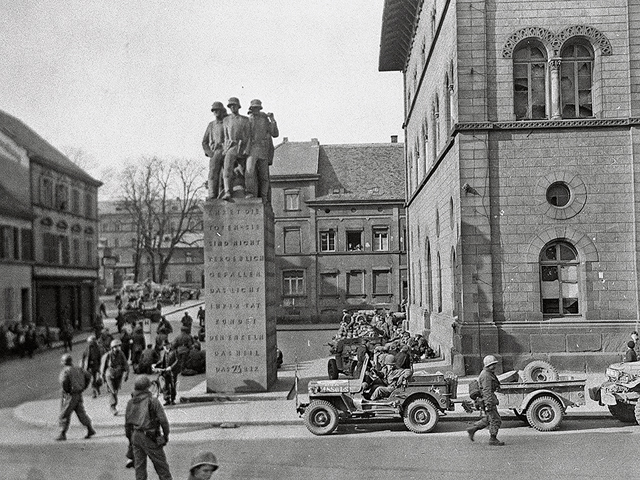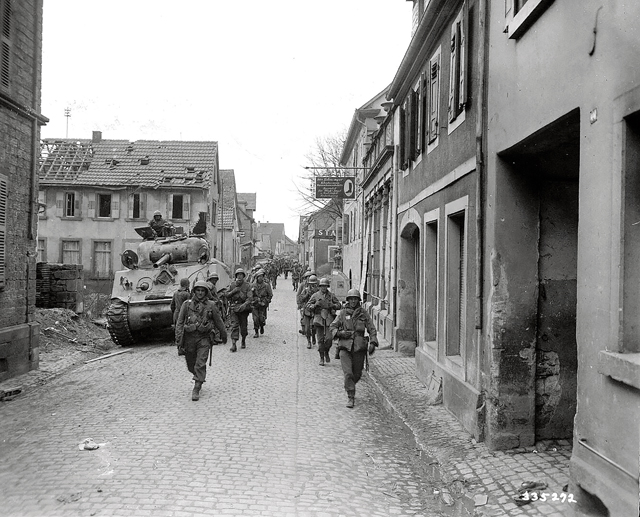
In March 1945, the U.S. Third and Seventh armies launched Operation Undertone to clear the last remaining Axis-held territory on the western bank of the Rhine. To the north, First Army’s Operation Lumberjack reached the river’s banks from Cologne south as far as Koblenz. To the south, the Seventh Army had liberated most of France up to the German border. This left a large salient, with a base along the Rhine and an apex near Trier blocking the further advance of Lt. Gen. George Patton’s Third Army.
On March 12, Patton’s forces began crossing the Moselle at several points against light opposition. Within days, they had cleared the river’s south bank and unleashed tanks deep into the German rear. On March 15, Seventh Army attacked north into the still formidable fortifications of the Siegfried Line or Westwall on the Franco-German border. That same day, large air attacks by medium bombers virtually levelled the towns of Pirmasens and Zweibrücken, communications centers just behind the front lines, killing both soldiers and civilians.

While the defenders initially delayed the Seventh Army’s advance, they could not ignore the armored columns approaching from behind and began their retreat to and across the Rhine. As Third Army’s tanks cut the main route leading east from Kaiserslautern, units of the 17th SS Panzergrenadier Division attempted to escape through the Pfälzerwald, along today’s B10. On March 18, near Hauenstein, U.S. Army Air Force fighters caught the division strung out along the highway and destroyed several vehicles, many of which remained buried there until they were rediscovered during road construction in 2002.
In the wake of the German retreat, the first American soldiers entered Kaiserslautern. From the northwest, Third Army’s 80th Infantry Division left Kusel on the morning of March 20 and passed through Altenglan, Reichenbach-Steegen, Schwedelbach, and Weilerbach to reach the city, where they captured 275 prisoners. The next day, Seventh Army’s 45th Infantry Division advanced northeast from Homburg, passing through Bruchmühlbach, Spesbach, and Ramstein, with many villages flying white flags, before halting near Otterbach.
Both units joined the pursuit to the Rhine and began crossing the river near Mainz on March 28. Operation Undertone set the stage for the final campaign in Germany, culminating in V-E Day on May 8, 1945.


